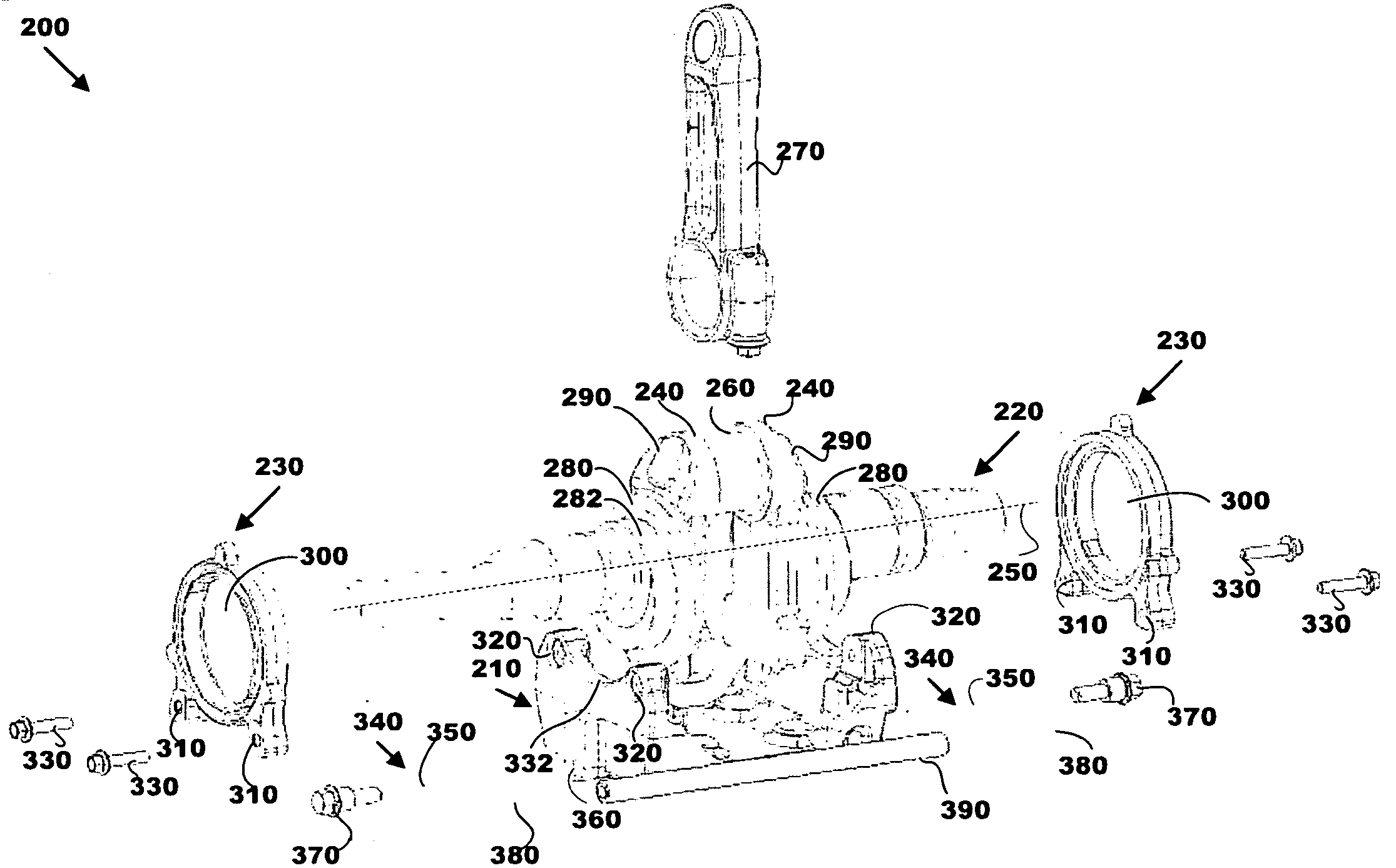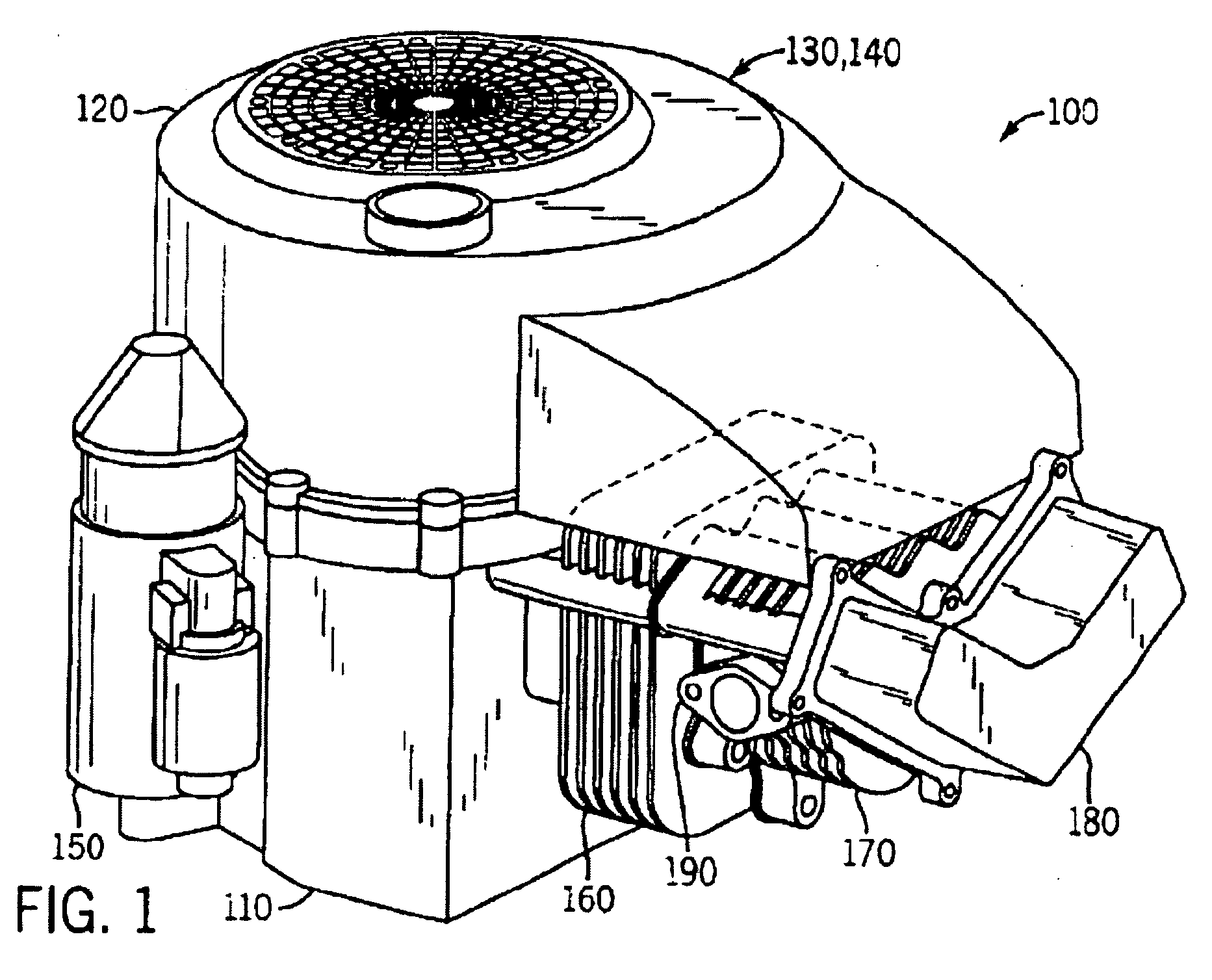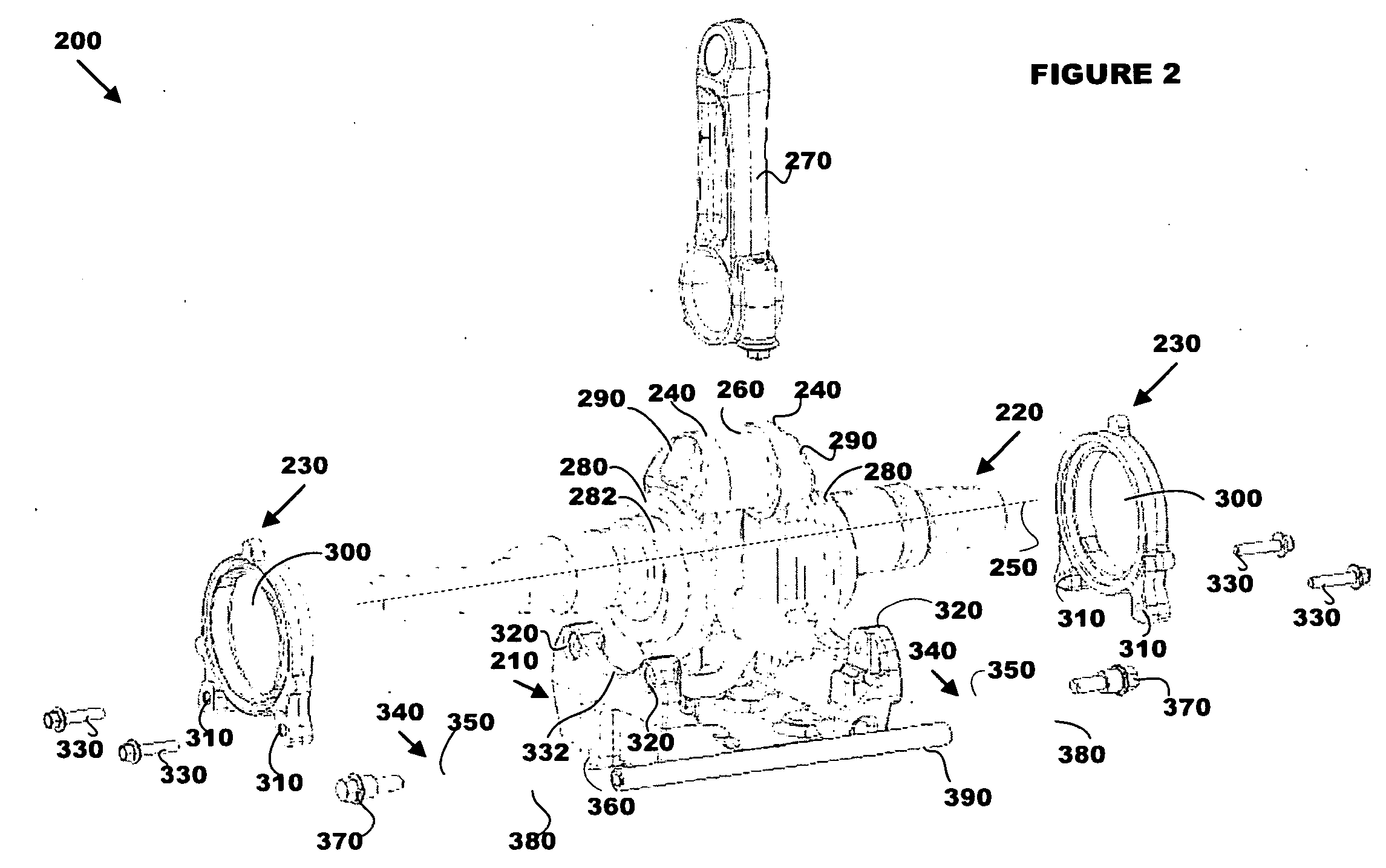Engine Balance System
a technology of engine balance and balance plate, which is applied in the direction of machines/engines, shafts, bearings, etc., can solve the problems of reducing the useful life of machines, causing operator fatigue, and single cylinder engines to be piston reciprocating, so as to reduce the weight and vibration, reduce the undesirable rotational movement of the counterweight, and improve the performance
- Summary
- Abstract
- Description
- Claims
- Application Information
AI Technical Summary
Benefits of technology
Problems solved by technology
Method used
Image
Examples
Embodiment Construction
[0017]Referring to FIG. 1, a single cylinder, 4-stroke, internal combustion engine 100 designed by Kohler Co. of Kohler, Wis. includes a crankcase 110 and a blower housing 120, inside of which are a fan 130 and a flywheel 140. The engine 100 further includes a starter 150, a cylinder 160, a cylinder head 170, and a rocker arm cover 180. Attached to the cylinder head 170 is an air exhaust port 190. During operation of the engine 100, a piston (not shown) moves back and forth in a linear manner (that is, reciprocates) within the cylinder 160 towards and away from the cylinder head 170. The movement of the piston in turn causes rotation of a crankshaft 220 (see FIG. 2), as well as rotation of the fan 130 and the flywheel 140, which are coupled to the crankshaft. The rotation of the fan 130 cools the engine, and the rotation of the flywheel 140 causes a relatively constant rotational momentum to be maintained. As will be described below in relation to FIGS. 2 and 3, the engine 100 furth...
PUM
 Login to View More
Login to View More Abstract
Description
Claims
Application Information
 Login to View More
Login to View More - R&D
- Intellectual Property
- Life Sciences
- Materials
- Tech Scout
- Unparalleled Data Quality
- Higher Quality Content
- 60% Fewer Hallucinations
Browse by: Latest US Patents, China's latest patents, Technical Efficacy Thesaurus, Application Domain, Technology Topic, Popular Technical Reports.
© 2025 PatSnap. All rights reserved.Legal|Privacy policy|Modern Slavery Act Transparency Statement|Sitemap|About US| Contact US: help@patsnap.com



